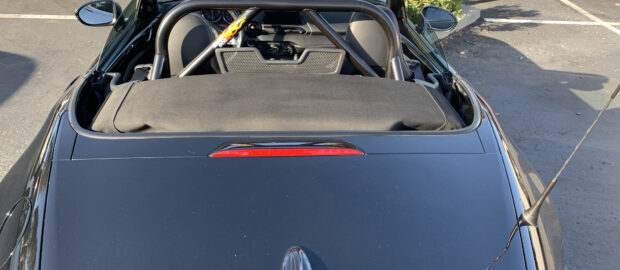ND2 Miata Gets a Hard Dog M4 Roll Bar.
The final piece to the Miata puzzle has been installed. If anything it should have been the first piece of the puzzle, but naturally there were a few detours along the way…
So why all the hubbub over Milton’s ND2 Miata getting a roll bar installed? The roll bar is the golden ticket to track days with the Miata, which is where we’ve been wanting to test out the mighty Mazda all along. Sure, you can technically take a stock ND Miata on track with some organizations, but the stock rollover hoops are pretty flimsy looking once you peel back the decorative plastic covers. So there are “No Ragrets” getting some real deal rollover protection installed this go around.
Dog With Flames?
There are a variety of roll bars available for the MX-5 Miata, but Hard Dog is what you’ll often see on a Miata attending your local autocross or track day paddock. A bolt-in roll bar is a good middle ground between the factory setup (at least the ND has something unlike early Miatas) and a full blown roll cage, which is never a good idea for a street driven car.
A word of caution: Before choosing a roll bar, make sure you fit in the car and pass the “broomstick test” with a helmet. The ND is a small car, and depending on your height and build, an off the shelf roll bar may not be tall enough to clear the driver’s head. It’s strongly encouraged to go sit in a Miata with a roll bar installed. If roll bar clearance is close, you can seat lowering brackets are available for stock seats without needing to purchase an aftermarket bucket and messing with the airbag system for road use.
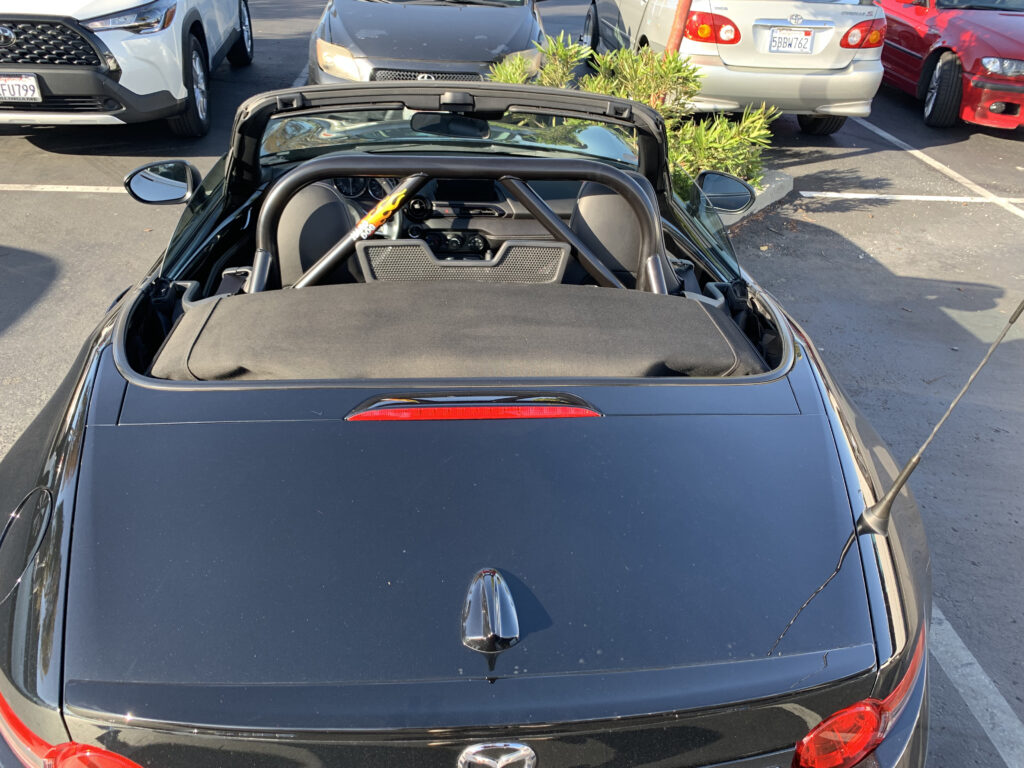
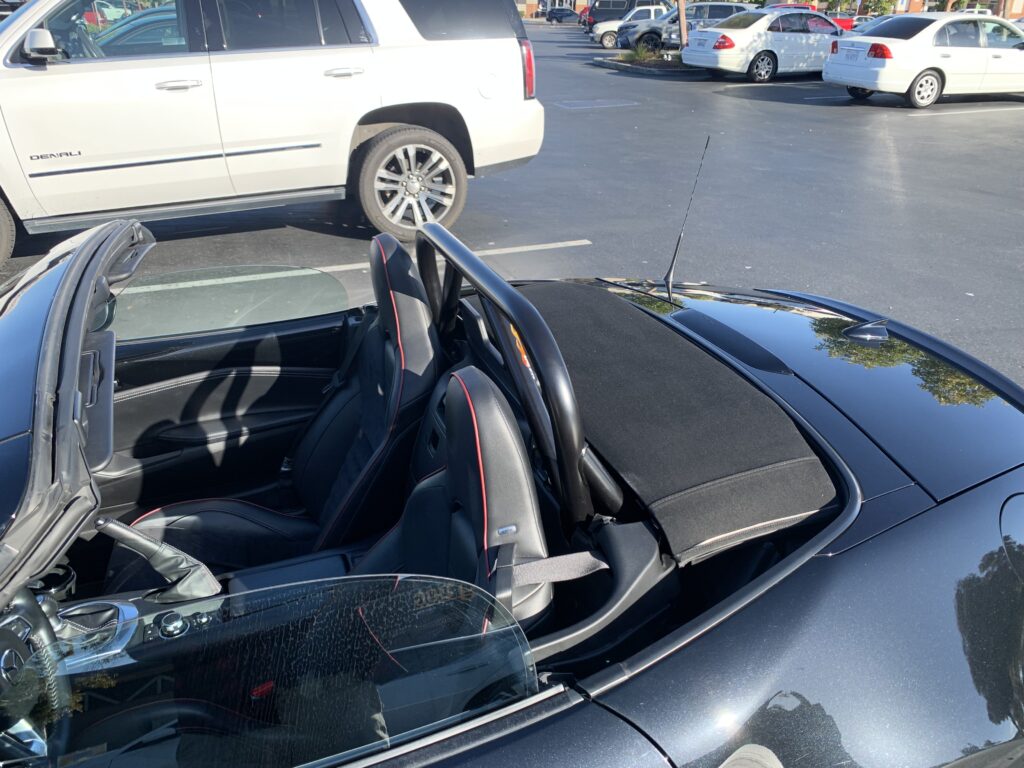
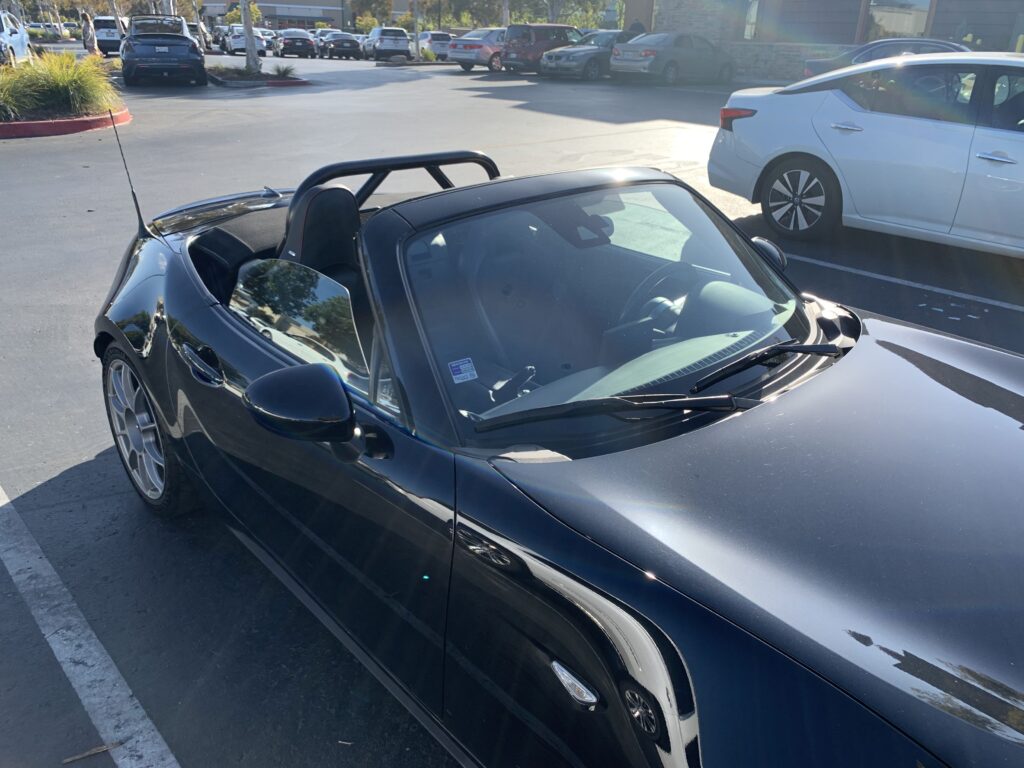
So why pick the Hard Dog M4 Sport? Without waging a forum war, the ND roll bar options seem to boil down to cost, clearing the soft top when raised, and storage compartment functionality. In the case of the Hard Dog M4 Sport bar with the optional double diagonals (WHICH ARE REQUIRED by most track day organizations) is configured in a way that doesn’t do away with the rear bulkhead storage compartments. Some brands have different diagonal bar placement, so you may lose what little interior storage space the ND has from the factory.
In Milton’s particular case, SakeBomb Garage sells the Hard Dog Bar, and since they were also going to be performing the install, it could be shipped directly to their shop. Technically you can order the M4 Sport bar without the diagonals, but there’s no reason not to spend the extra $120 dollars on them (for a total of $855 before tax & shipping) as they’re typically a must-have item by most track day organizers for a roll bar. Not only do they add an extra level of rollover protection by bracing the main hoop, but it’s always easier to get rid of a track day legal bar setup should you decide to remove and sell it later on (or if it’s already installed in the car).
The bar is built to order so it took several weeks to ship. Once it arrived at the shop, we performed a late night dropoff of the car and would proceed to wait for the call once ready. After two days the car was ready for pickup. So it was back to Fremont to pick up the car.
Saturday Morning Shakedown
On the drive home Milton commented how much stiffer the chassis felt with the freshly installed Hard Dog bar. While it gained two additional pickup points (near the rear wheel wells), I was still skeptical that it would radically transform the car. The following morning he stopped by so I could give the Miata a whirl, and in typical fashion, I was wrong.
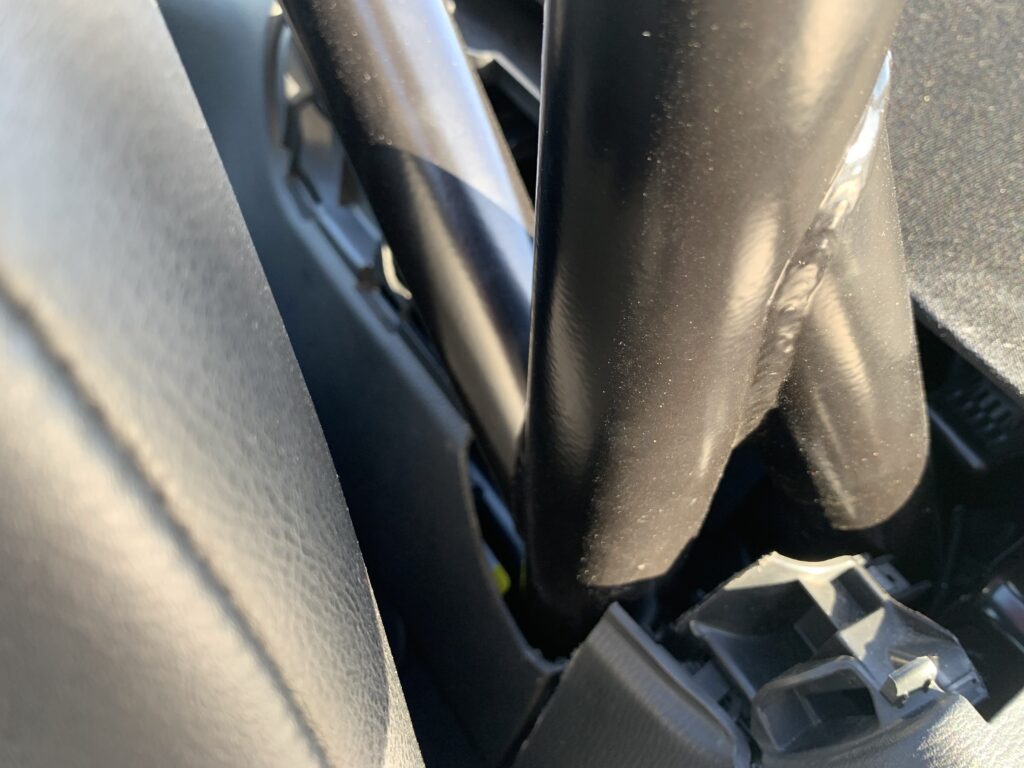
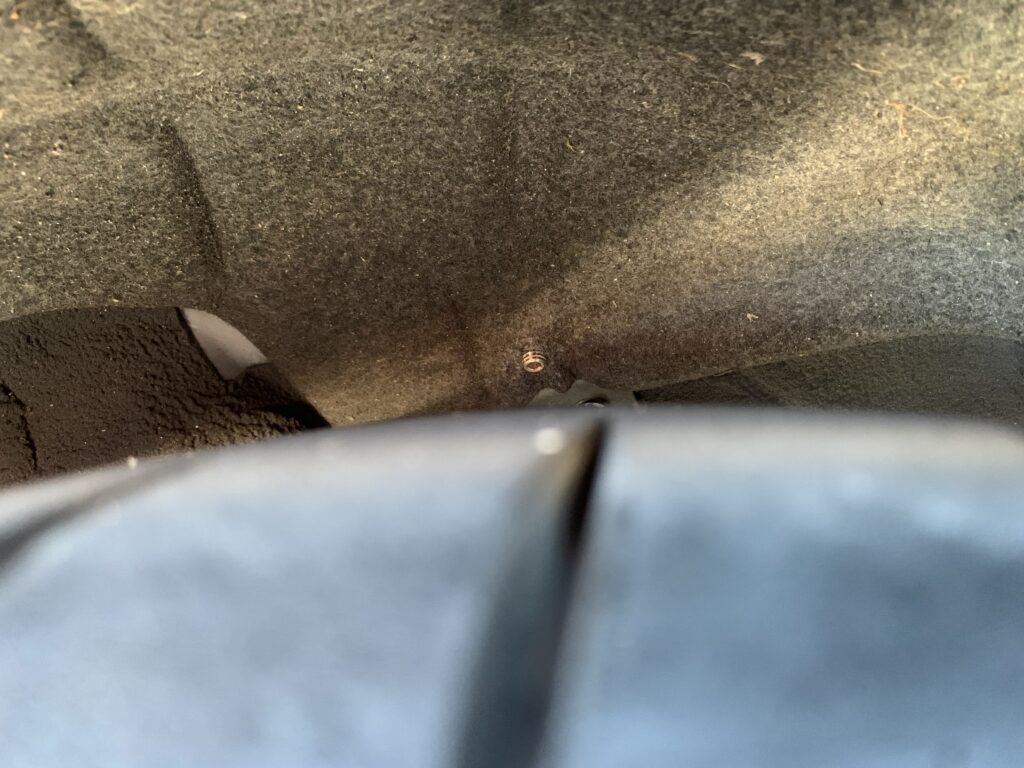
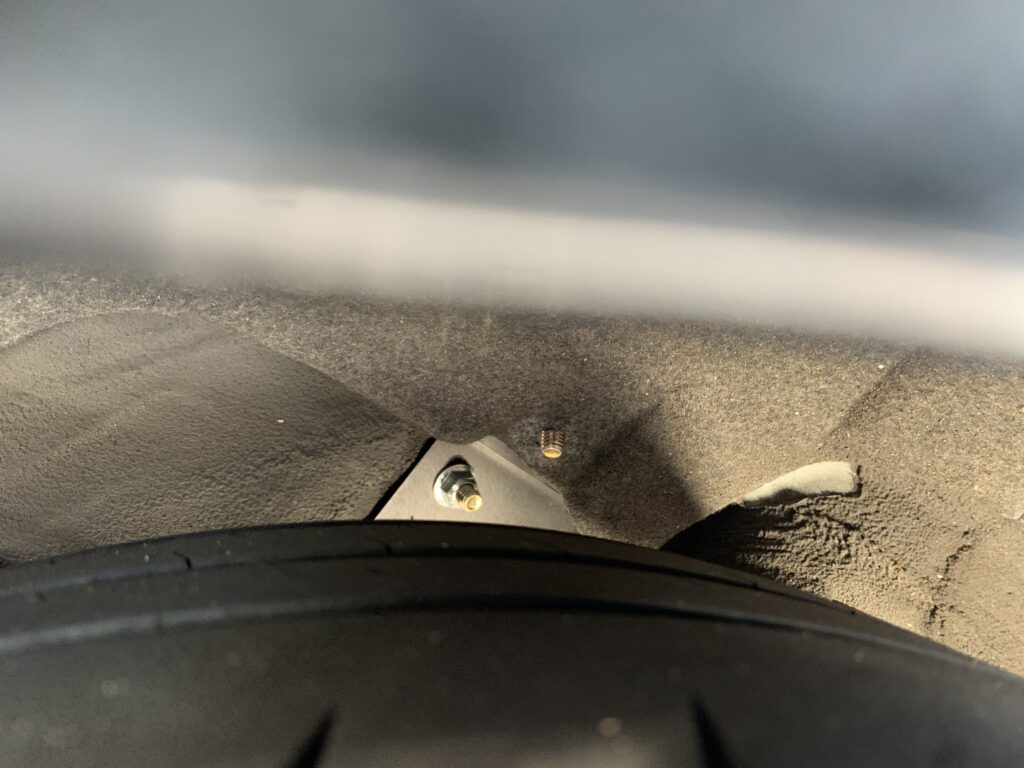
Despite being an open top car, the Miata now feels like the front and rear of the car genuinely tied together. Not that the ND was ever that sloppy in the chassis department, yet the highly calibrated butt suspension dyno noticed immediate responsiveness from the rear end upon cornering. Gone is the split second delay of waiting for the rear suspension to catch up to the front end inputs. Add in the Ohlins coilovers & Eibach sway bars and Milton’s ND2 is quite composed these days through the twisties.
The best analogy I can think of is the Miata feels a lot closer to the structural rigidity of a Porsche Boxster. And here comes the Porsche tangent: There’s something inherently taut about the P-Car chassis that a lot of other automakers fall short on matching (insert Risky Business “Porsche, there is no substitute” scene). After poking around online, the factory 986 & 987 Boxster models utilize a roll hoop setup not dissimilar to the Hard Dog bar, so maybe there’s a correlation.
What’s the Catch?
If a roll bar is so great, why doesn’t everyone have one in their Miata? We can both objectively and subjectively quantify this question.
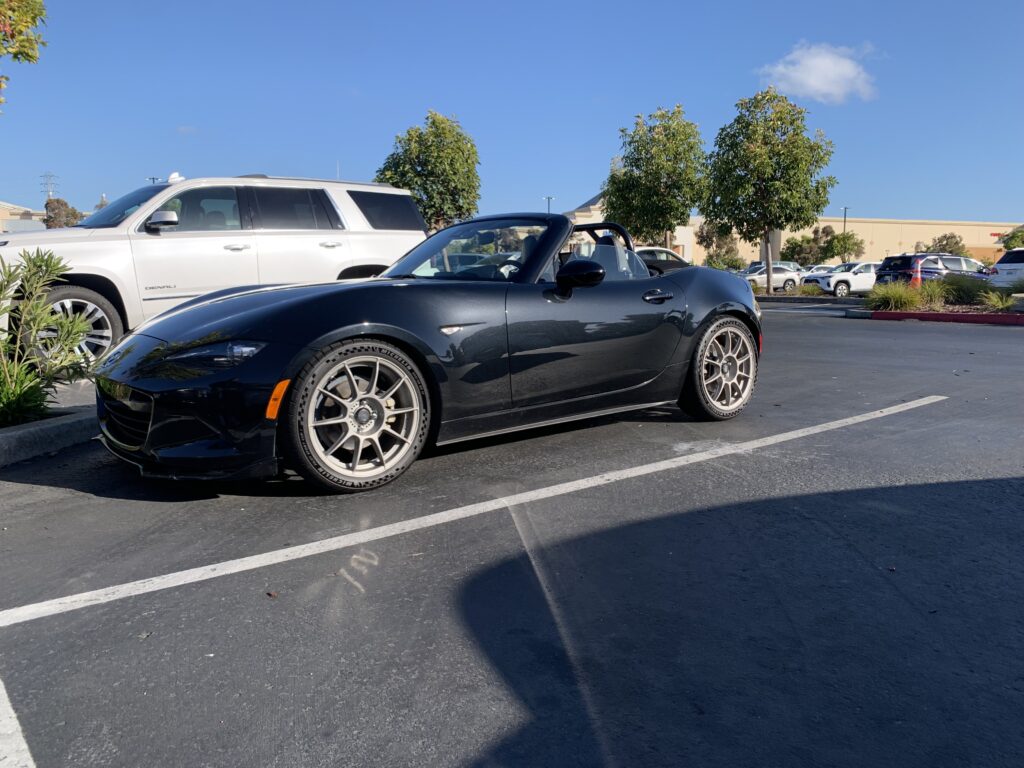
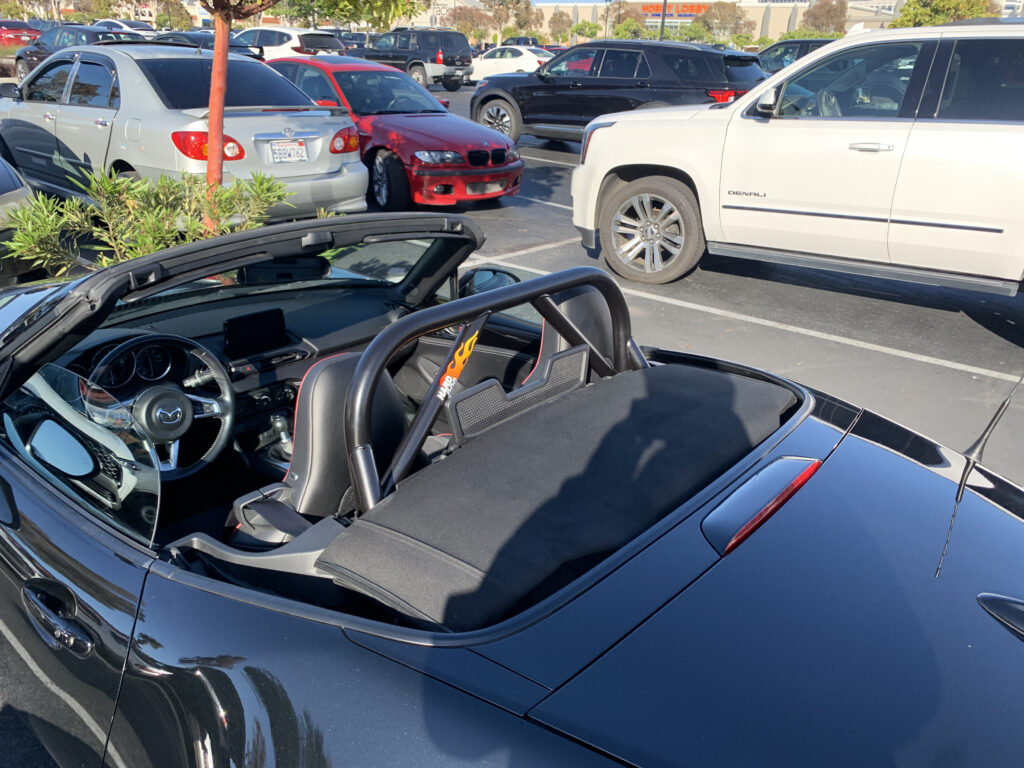
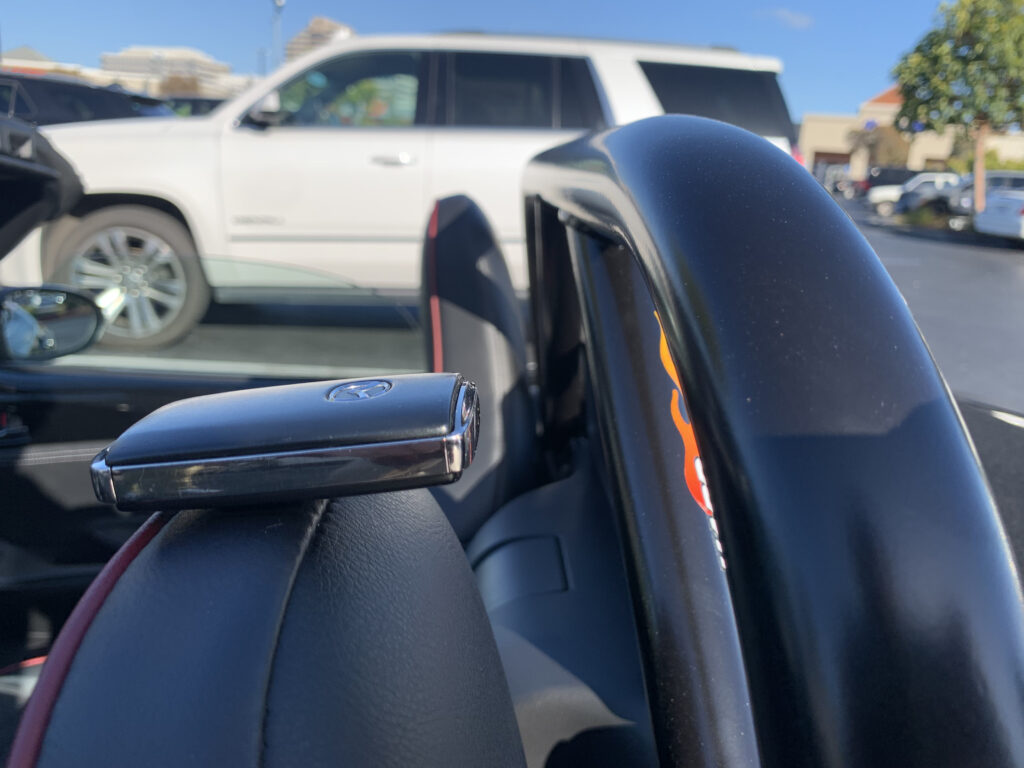
On the objective front, there is a small weight penalty around 25 pounds, which depending on how much of the Colin Chapman diet you choose to abide by, will dictate its necessity in a road going Miata. The other issue is that opening and closing the soft top is no longer one fluid motion as the roll bar creates a hurdle that splits the procedure into two parts. Surprisingly rearward visibility isn’t really impeded, so if that was a concern you don’t have much to worry about on that front.
Now it’s time to discuss the subjective compromises with the roll bar. Whereas the ND generation of the MX-5 Miata has a lot of flowing lines, the roll bar sits very upright and makes its presence known. When standing or driving behind the car, the diagonals are very apparent, which is another indicator of a modified car. Ultimately the roll bar has to be functional, so aesthetics are somewhere around line item no. 94 of the priorities list.
But don’t worry, as the roll bar seems to be a magnet for car enthusiasts. Whether it’s a fellow Miata-ist giving you the thumbs up because they know that you Miata seriously (yes, I created a new verb), or an international symbol to be tailgated on the road by the other sporty car produced by “Mr. T” & Fuji Heavy Industries. Who knew one simple mod to the Miata could cause that much of a stir!
-JC

